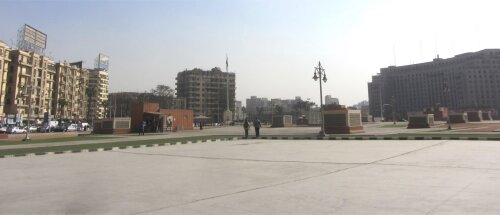The Neutralisation of Space Through Urban Relocation and Housing in Post-revolutionary Egypt
Promotors: Els De Vos and Stijn Oosterlynck
While the Egyptian uprising occurred through the politicisation of public space which is well documented, the post-revolutionary regime has since then used urban design to depoliticise space. This is reflected in urbanisation and housing resettlement at an unprecedented rate starting in 2014. But the impact goes beyond the scale of the urban development. Special control mechanisms, such as profiling, segregation, and deep surveillance, are being deployed in these new spaces. This research examines how interests in domination manifest themselves in the built environment, in a process called the political ‘neutralisation’ of urban space. The study of these projects highlights how global trends, such as neoliberalisation, dissolution of citizenship, depoliticisation, and exceptional enclaving, materialise in their Egyptian, political and historical context, and how politics and hegemony are translated into spatial forms. This PhD research shows how space was effectively depoliticised by design, and accordingly neutralised. A description of abstract, sterilised, or singular space (Massey 2005; Lefebvre 1991; Sennet 1990) can be seen as the outcome of neutralisation. The PhD research reveals specific design scripts and design principles which produce and maintain this neutralisation.
The neutralisation process is studied by means of two complementary cases: the dilapidated Maspero neighbourhood in central Cairo, and the celebrated public housing project in al-Asmarat on the outskirts of the city. Official statements present Al-Asmarat as a prestige project of good order and civilisation, mostly in contrast to the so-called informal or poor areas, such as the Maspero neighbourhood. Both are used as examples of the state’s remarkable transformation, but also as a demonstration of its power, kind of order and prosperity. The process of power extension is presented in terms of the ‘disruption and reduction’ of the social and urban fabric, the fabric which is expressed in design scripts and the associated territorialities. Indeed, I found that the neutralisation of space consists of reducing the multiplicity of spatial design scripts present to a single, formal, spatial script that leads to an exclusive territorial dominance.

Want to know more?
See Mohamad's personal page for more information, contact links and publications!